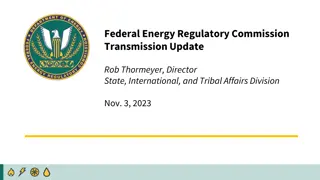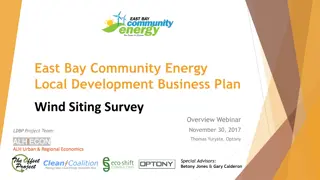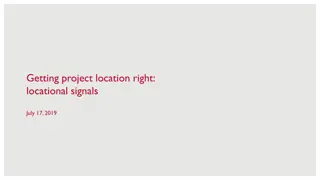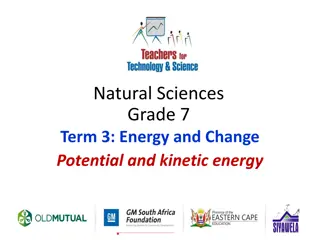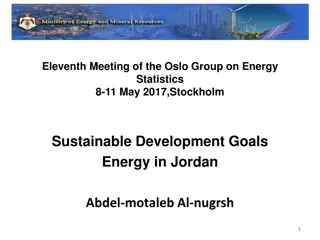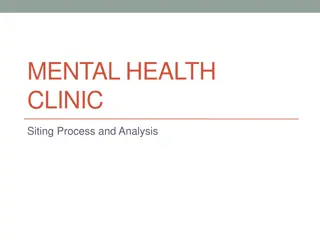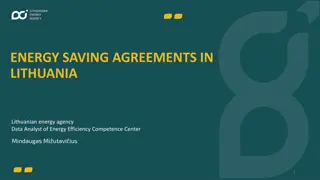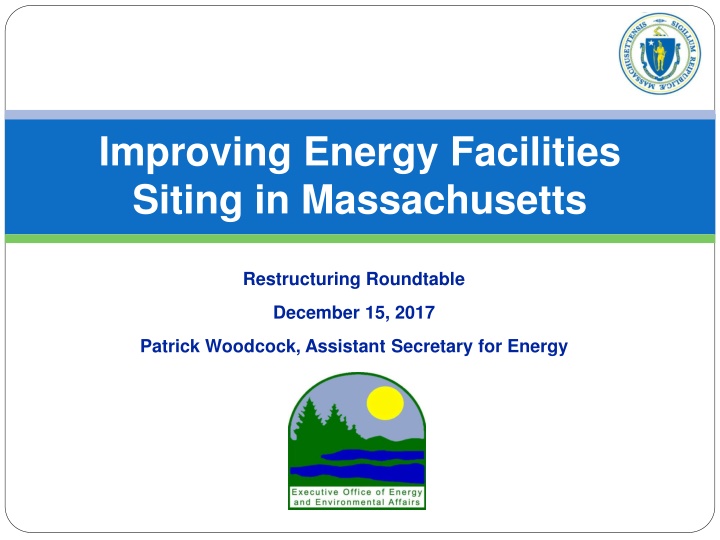
Energy Facilities Siting in Massachusetts: Key Insights
Energy Facilities Siting Board in Massachusetts plays a crucial role in reviewing proposed energy projects to ensure a reliable supply, minimal environmental impact, and cost efficiency. Legislative milestones and permitting agencies are also highlighted. The EFSB's jurisdiction covers facilities above 100 MW and electric transmission lines. Understanding the EFSB's statutory authority and key regulatory processes is essential for energy development in the region.
Download Presentation

Please find below an Image/Link to download the presentation.
The content on the website is provided AS IS for your information and personal use only. It may not be sold, licensed, or shared on other websites without obtaining consent from the author. If you encounter any issues during the download, it is possible that the publisher has removed the file from their server.
You are allowed to download the files provided on this website for personal or commercial use, subject to the condition that they are used lawfully. All files are the property of their respective owners.
The content on the website is provided AS IS for your information and personal use only. It may not be sold, licensed, or shared on other websites without obtaining consent from the author.
E N D
Presentation Transcript
Improving Energy Facilities Siting in Massachusetts Restructuring Roundtable December 15, 2017 Patrick Woodcock, Assistant Secretary for Energy
What is the Energy Facilities Siting Board? Energy Facilities Siting Board (EFSB) is a nine-member board chaired by the Secretary of EOEEA; includes commissioners of the DPU (two), MassDEP, DOER, Secretary of EOHED, and three public members (with labor, environmental, and energy expertise). EFSB overall statutory purpose: review proposed energy facilities to ensure: (1) a reliable energy supply, with (2) a minimum impact on the environment, at (3) the lowest possible cost. Statutory authority specified in G.L. c. 164, 69G 69S; Regulatory authority in 980 CMR 1.00 - 12.00. DPU Siting Division is staff to the EFSB (and the DPU Commission). Staff adjudicates cases; prepares tentative decisions and proposed actions for review by the Board. 1
Key Legislative Milestones for the EFSB 1971 Legislature created the Massachusetts Electric Power Plant Siting Commission. St. 1971, c. 78. 1973 Siting Bill enacted in response to the Energy Crisis creating the Energy Facilities Siting Council (EFSC). To avoid siting impasses, EFSC given power to override denials, delays, or legal appeals of all state and local permits in its Certificate authority. St. 1973, c. 1232. 1992 Reorganization Act moved the EFSC to the DPU, where it is renamed the EFSB. St. 1992, c. 141. 1997 Electric Utility Industry Restructuring Act significantly revised siting process to address competitive generation market. St. 1997, c. 164. Ends EFSB review of facility need and financial viability of the generator, reflecting the role of competition. 2
Key Federal, State, and Local Permitting Agencies for Energy Facilities Federal Agencies FERC (Interstate pipelines); EPA; Bureau of Ocean Energy Management (off-shore wind facilities beyond 3-mile MA nautical boundary); US Army Corps of Engineers; USFWS; FAA Massachusetts Environmental Policy Act (MEPA) Disclosure of environmental impacts and consideration of all feasible measures to minimize or avoid such impacts. Massachusetts Dept. of Environmental Protection (MassDEP) Air Plan Review use of best available technology to reduce emissions Water-related permits -- discharge; stormwater; water withdrawal; tidelands (chap. 91) Hazardous wastes and spill prevention plans Other State Agencies Massachusetts Historical Commission; Natural Heritage and Endangered Species Program; Coastal Zone Management; State Fire Marshal (fuel/ammonia storage); MA Legislature (Article 97 public lands) Local Agencies Conservation Commission; Zoning Board and ZBA; Building Dept.; Planning Board; DPW; Electrical Inspector; Health Dept., etc. 3
EFSB Jurisdictional Facilities Generating facilities: > 100 MW and ancillary structures. Electric transmission lines: New Corridor: > 69 kV line and > one-mile length. Existing Corridor:> 115 kV line and > ten-mile length, except for reconductoring or rebuilding at same voltage. Intrastate gas pipelines:over 100 psig and over one-mile length, except for rebuilding/relaying existing lines. (FERC has jurisdiction over interstate pipelines; EFSB intervenes). Gas storage facilities (LNG/CNG): New/expanded storage facilities; EFSB regulations set threshold at 25,000 gallons. Oil Facilities:new oil pipelines over one-mile length; new storage tanks over 500,000 barrels. 4
EFSB Jurisdictional Facilities Photos: Courtesy of National Grid, Footprint Power, and Eversource Energy 5
Highlights of the EFSB Siting Process Adjudicatory process is data-intensive, comprehensive, and rigorous. Opportunities for public comment and direct involvement as a party (including municipalities, abutters, organizations). 360 degree focus on reliability, cost, environmental impacts, public health, and safety. Some EFSB issues are not addressed elsewhere, but there is also some overlap. Standard of review includes consistency with statutes, regulations, and state energy and environmental policies. Deliberation by the Board in open public meetings. Appeals go directly to the Supreme Judicial Court. EFSB can grant a Certificate for all necessary state and local permits. Extraordinary power a key reason the EFSB was created. 6
What is Working Well with MA Siting? EFSB decisions have fared well on appeal at the SJC. EFSB carefully considers all points of view in its cases, and focuses on the evidence and applicable standards of review. Vital energy infrastructure in Massachusetts has been built despite controversy: Power plants, electric transmission lines, substations, intrastate gas pipelines; LNG storage. Carbon emissions from the consumption of electricity in Massachusetts (as of 2014, per MassDEP data) are 34 percent lower than in 1990, and the state is on track for further reductions mandated by the GWSA. EIA data show even greater reductions. 7
What Can be Improved with MA Siting? Ensuring that the review process is consistently completed in 12 months, which is not always the case. Delays can occur for a variety of reasons. EFSB regulations are in need of updating. Some of them go back to the founding of the Board 45 years ago. The Board will consider issuing a package of proposed amended regulations in the coming months, for public review and comment. EFSB statutes could benefit from updates and clarifications, but they work. The dual siting jurisdictions of the DPU and the EFSB are somewhat duplicative and confusing. Eliminating duplication of review areas by EFSB and other agencies remains a perennial concern. Some community and environmental organizations contend that applicants should provide funding for intervenor participation in EFSB cases. 8
Other Siting Challenges/Opportunities Offshore wind and current regulatory structure. As Massachusetts becomes an increasingly diverse state, how can the siting process best ensure that the Commonwealth s Environmental Justice Policy is meaningful and inclusive? Ensuring that the occasional bad project does not preclude siting facilities that are needed, environmentally sound, safe, and cost- effective. Is there a role for state energy and environmental officials to develop an energy strategy that would improve siting outcomes? Pressure on land-use from distributed energy resources. However, most distributed energy is non-jurisdictional for EFSB. 9
Thank You 10





